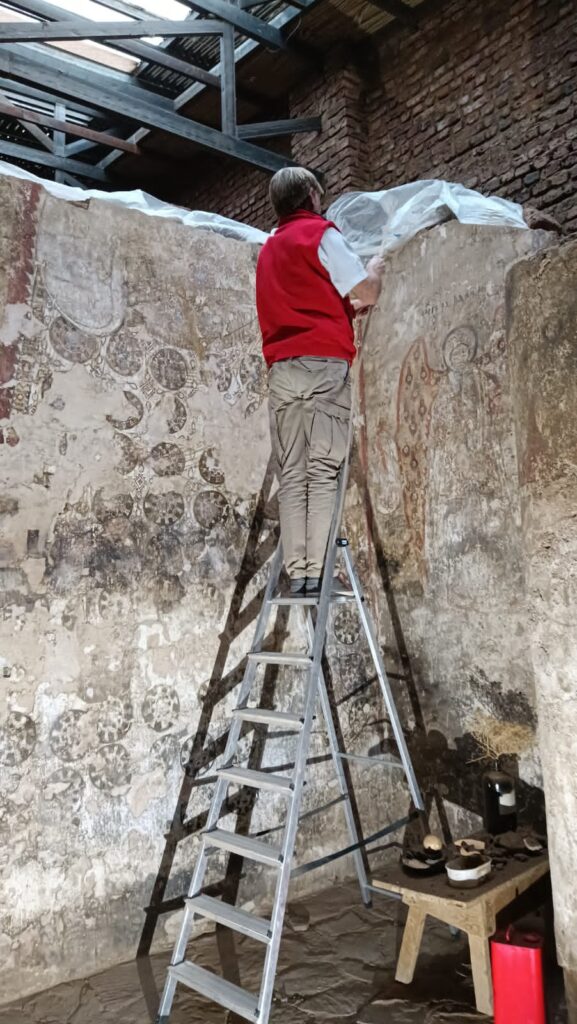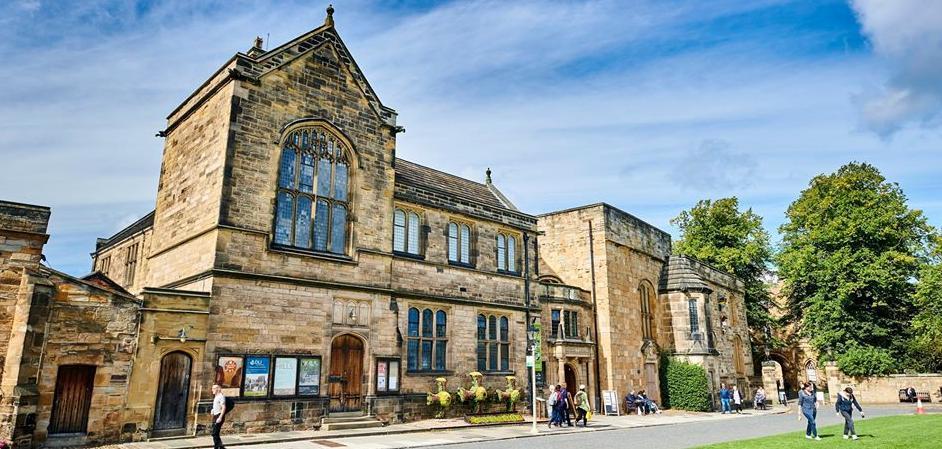So now its time for Berlin!
This time our reconstructions of the costumes will be exhibited from the 5th of February till the 12th of April in the Bode Musum, Berlin.
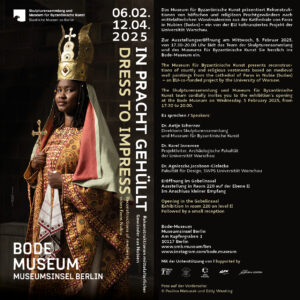
Paris, here we come…. 🙂
Paris will be the place where the results will be shown to a wider audience. First, on 15 October four members of our team will present the activities of Warsaw University in general and the costumes project in special at the Centre de civilisation polonaise (Sorbonne University) in four presentations:
Grzegorz Ochała, Magdalena Woźniak, Dobrochna Zielińska and Karel Innemée will present the project in its academic context of Nubiological studies and research at the University of Warsaw.
After this event, the costumes will be the centerpieces of an exhibition in the Bode Museum in Berlin. The details and dates of this exhibition are still in preparation and we will update you soon.
The costumes are coming!
The re-creation of five costumes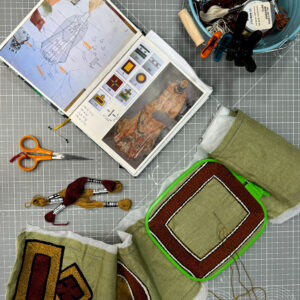 (one bishop, two kings and two royal mothers) is now in its final phase. The garments are being adjusted to fit the models, the last decorations are embroidered. Alicja Kozłowska (School of Form, Warsaw) did an amazing job in the decoration of the bishop’s outfit.
(one bishop, two kings and two royal mothers) is now in its final phase. The garments are being adjusted to fit the models, the last decorations are embroidered. Alicja Kozłowska (School of Form, Warsaw) did an amazing job in the decoration of the bishop’s outfit.
A royal costume is not complete without crown and other regalia. They were made by Bartosz Głowacki (alias ‘the Viking’) and Kuba Łagunionok. Hand crosses, pendants, and crowns were made of brass and some parts were gilded.
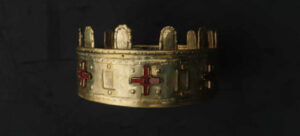
The garments and attributes were carefully prepared and fitted one by one. No one, however, had seen them actually worn together. That moment of truth took place in the Pastoor Van As church in The Hague on 18-19 August. As a prequel to the presentation in the Louvre (17 October 2024) a photo session was organized in which six models from Sudan wore the complete costumes. It took Eddy Wentig and Paulina Matusiak almost two days to make several hundreds of photos of which the best were chosen. Although we had followed the gradual process of making the costumes, all people present were impressed by the results of what was also a dress-rehearsal. Some details had to be adjusted and this took place soon afterwards.
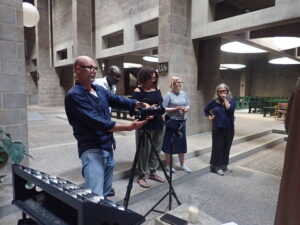
and wait for the results…. 🙂
These were two inspirational days!
On 12 and 13 April the workshop 'Authority of State and Church in Nubia, its Expression in Costumes’ took place at Warsaw University: two days of presentations and discussion in and by the learned company of a group of colleagues from six countries and various disciplines. Foreign speakers were Claire Bosc-Tiessé, Robin Cormack, Cathérine Jolivet, Angelika Lohwasser, Robert Morkot, and Janice Yellin. Papers and discussions were inspiring, fruitful, and a basis for further thoughts.


A visit to the Faras Gallery in the National Museum was the final event. We learned a lot and most of all, we had a great time in great company. Thanks to all who made it possible!
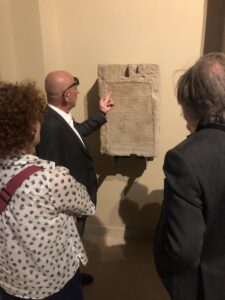



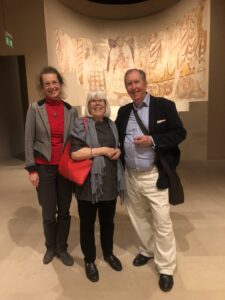
A visit to one of Leiden’s best kept secrets: the Textile Research Center.
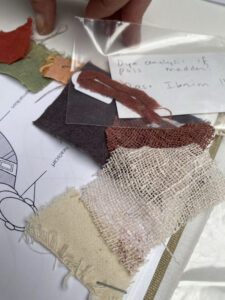
We gladly invite you to the workshop ‘Authority of State and Church in Nubia, its Expression in Costumes’.

On 12 and 13 April 2024, a workshop titled 'Authority of State and Church in Nubia, its Expression in Costumes’ will take place. This is part of the research project 'Costumes of Authority. The Image of Royalty and Clergy in Christian Nubia’ (NCN, Polonez bis).
In virtually all social structures hierarchy, power, and authority play a role and this was also the case in Christian Nubia. Costume plays an important role as a way of displaying authority, and vestments and attributes can often be ‘read’ as form of non-verbal communication. This visual language in the Nubian kingdom of Makuria has been shaped and influenced by earlier cultures and neighbouring regions and in order to understand the relations of power and authority in Nubia they have to be seen in a wider context. That is the purpose of this workshop. In the coming two days a group of scholars from various disciplines will present short papers, followed by discussion, about power, authority and their expressions in Byzantium and the Nile Valley.
The workshop will take place at the Faculty of Archaeology of the University of Warsaw and will be in hybrid form. If you are interested in attending online please contact Karel Innemée, k.innemee@uw.edu.pl.
Matching, fitting – fitting, matching 🙂
The re-creation of Nubian costumes of clergy and royalty is one step further. We have chosen a selection of colour samples that are closest to the colours used in the paintings and based on these Dorota Roqueplo has made her first sketches of the garments that can be distinguished in the bishop’s costume. The session we had was intensive and inspiring!



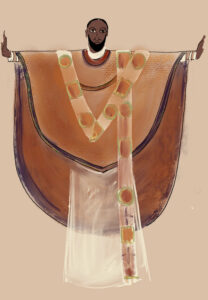






Study visit to the Nubia Museum in Aswan
From 1 till 12 November we paid a working visit to Aswan, mainly for studying the textiles in the Nubia Museum. The museum harbours a treasure of objects that were found during the UNESCO salvage campaign in the 1960s.
The staff of the museum was extremely helpful and in spite of the temperature of 37 degrees we had a productive time.
Some of the textiles were on permanent display and could only be examined in the vitrine with a digital microscope. Others were in the store and these could be studies in a more comfortable way.


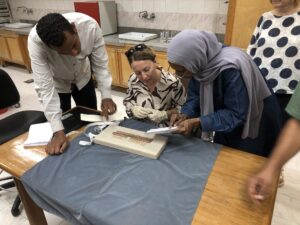



The image taking shape
The first samples of textiles have been made. Katarzyna Schmidt-Przewoźna surprised us with a portfolio of dyed and printed fabrics, based on the patterns and colours that we find in the mural paintings from Faras.






Reconstructing costumes of Nubian dignitaries
An important part of the project consists of reconstructing a number of costumes of Nubian dignitaries: bishops, kings, royal mothers. For this purpose five ‘profiles’ have been chosen: a bishop, two kings, and two ‘royal mothers’ (sisters of the king who were the mothers of the successor).
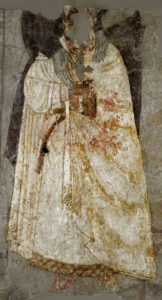





This task is done in close cooperation with the School of Form (SWPS University) in Warsaw, the perfect partner for this, since this University focuses on design and sociology. This is the team:
- The dean, dr Agnieszka Jocobson-Cielecka has been an enthusiastic colleague for us from the very beginning, and coordinates the activities.
- Ewa Klekot is cultural anthropologist at the School of Form.
- Katarzyna Schmidt-Przewozna is an expert in the reconstruction of dyes on the basis of archaeological evidence.
- Dorota Roqueplo is an internationally recognised costumographer of mainly film, theatrical and opera costumes.

 One of our first steps was a visit to the Abegg Stiftung in Switzerland. The collection of the Abegg Stiftung, in Riggisberg, a small picturesque village near Bern, houses an amazing collection of textiles with many pieces of ancient fabrics (garments, wall-hangings). Agnieszka Jacobson, Dorota Roqueplo, Magdalena Wozniak, Dobrochna Zielińska, and Karel Innemée paid a visit to the collection on 1 September, followed by an intensive working meeting.
One of our first steps was a visit to the Abegg Stiftung in Switzerland. The collection of the Abegg Stiftung, in Riggisberg, a small picturesque village near Bern, houses an amazing collection of textiles with many pieces of ancient fabrics (garments, wall-hangings). Agnieszka Jacobson, Dorota Roqueplo, Magdalena Wozniak, Dobrochna Zielińska, and Karel Innemée paid a visit to the collection on 1 September, followed by an intensive working meeting.
Durham, university archive.
From 17-21 July Dobrochna Zielińska, and Karel Innemée vistited the Sudan archive of the University of Durham. It consists of photographic and written documentation gathered during the British rule in Sudan and contains pictures of people, monuments, rituals, mostly from private sources and sometimes with unexpected surprises.

Brass coated helmet worn by a Lautuka trimesman during the tribal dance. Didinga Hills ca. 1930 (C.R. Williams G?S 1058/12)
Lisbon Workshop “Textiles and Body”
The workshop Making, Wearing, Displaying: Textiles and the Body in Pre-Modern Societies was organised by the EuroWeb COST Action and hosted in Lisbon, 3-5 May.

The Museum of Ethnology which hosted the venue
It aimed to explore the bodily experience of textiles and its significance through an interdisciplinary lens, bringing together historical, archaeological, anthropological, and bioanthropological perspectives to explore common topics of interest and the shared theoretical and methodological tools which can be deployed in present and future research on the relationship between textiles and the body.

Opening of the workshop
We had the opportunity to present our project in Session 4, dedicated to Textiles in Motion – The Dressed Body in Movement, with a focus on our collaboration with the School of Form team to reconstruct the impressive and voluminous costumes of the kings and bishops of Makuria.

Practical session about costume reconstruction
This workshop was a very interesting venue, as an important part of the communications addressed the topic of the reconstruction of the costumes and the participants discussed the challenges, opportunities, and limitations, as well as the terminology (reconstruction, replica, re-creation…) applied to this growing practice in textile studies. The presence of textile designers enriched our exchanges, bringing new expertise and opening promising paths for future collaborations.

The workshop participants dressed in reconstructed costumes
Working trip to Sudan. January 2023
Many of the paintings that are being analysed are in museum collections, but others are still in situ. Magda Wozniak and Karel Innemée went to Sudan in January 2023 (not knowing that this would impossible soon afterwards) to study the wall paintings in Dongola and Banganarti. In Dongola the paintings in the church on the citadel (BV) and in the so-called mosque building were of particular importance. In Banganarti the royal portraits in the Upper Church were studied.
We thank the Polish missions in Dongola and Banganarti for their hospitality.


